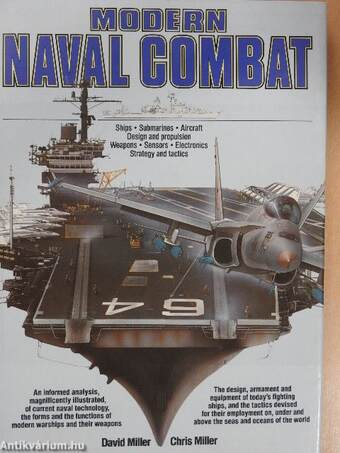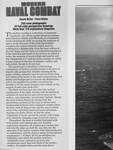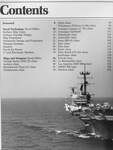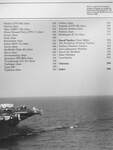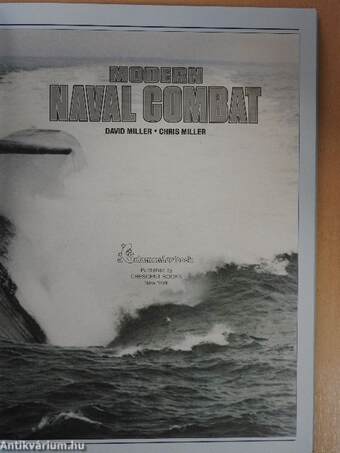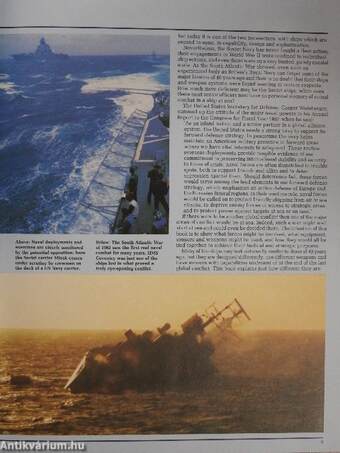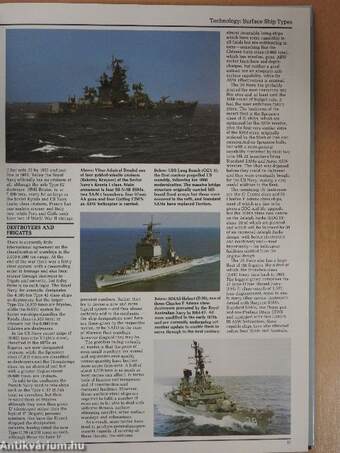1.116.661
kiadvánnyal nyújtjuk Magyarország legnagyobb antikvár könyv-kínálatát
Modern Naval Combat
Ships/Submarines/Aircraft/Design and propulsion/Weapons/Sensors/Electronics/Strategy and tactics
| Kiadó: | Crescent Books |
|---|---|
| Kiadás helye: | New York |
| Kiadás éve: | |
| Kötés típusa: | Fűzött kemény papírkötés |
| Oldalszám: | 208 oldal |
| Sorozatcím: | Salamander Books |
| Kötetszám: | |
| Nyelv: | Angol |
| Méret: | 31 cm x 22 cm |
| ISBN: | 0-517-61350-6 |
| Megjegyzés: | Fekete-fehér és színes fotókkal, illusztrációkkal. |
naponta értesítjük a beérkező friss
kiadványokról
naponta értesítjük a beérkező friss
kiadványokról
Fülszöveg
David Miller Chris Miller
250 color photographs
43 full color perspective drawings
More than 120 explanatory diagrams
The modern warship is a structure of enormous
complexity, one whose myriad advanced systems
must function reliably and efficiently in a frequently
harsh environment while occupying the minimum of
space. In the first part of this book David Miller
examines the various elements which must be
combined in a fighting ship, from the basic outline of
the hull shape and the choice of propulsion machinery
to the selection and layout of the sensors on which it
relies, the weapons it needs to fight and survive and
the refinements of C3 and electronic systems on which
it must depend in the face of airborne, surface and
sub-surface threats to its survival.
The second part is devoted to a fascinating
examination of modern warship design in the form of
superb color perspective artwork covering all the
major warship categories and the precise forms they
have... Tovább
Fülszöveg
David Miller Chris Miller
250 color photographs
43 full color perspective drawings
More than 120 explanatory diagrams
The modern warship is a structure of enormous
complexity, one whose myriad advanced systems
must function reliably and efficiently in a frequently
harsh environment while occupying the minimum of
space. In the first part of this book David Miller
examines the various elements which must be
combined in a fighting ship, from the basic outline of
the hull shape and the choice of propulsion machinery
to the selection and layout of the sensors on which it
relies, the weapons it needs to fight and survive and
the refinements of C3 and electronic systems on which
it must depend in the face of airborne, surface and
sub-surface threats to its survival.
The second part is devoted to a fascinating
examination of modern warship design in the form of
superb color perspective artwork covering all the
major warship categories and the precise forms they
have taken in the hands of the major naval powers. Full
details and background accompany the illustrations,
which are amplified by profiles specifying the
location of all the major weapons and sensors on the
vessels of each class dealt with.
The third and final part describes the tactical
employment of the ships, dealing with the historical
evolution of naval tactics and current practice in
surface, anti-submarine, air and mine warfare. Among
the most striking themes to emerge from this
penetrating analysis are the ways in which some
fundamental problems have remained constant since
the first clash of ships at sea, and the way in which
each of the individual aspects of naval operations
impinges on all the others, so that the naval
commander is faced, second by second, with a huge
and constantly changing range of tactical choices.
Throughout, the book is lavishly illustrated with
both superb color photographs and detailed
explanatory diagrams, all combining to explain how
and why the ships are built the way they are, the
operation of the various systems both individually and
in combination, and the precise nature of their tactical
employment — in short, all the possibilities and
limitations with which the modern task force
commander must contend in an arena that
encompasses more than two thirds of the world's
surface, the depths below and the skies above. Vissza
Témakörök
- Idegennyelv > Idegennyelvű könyvek > Angol > Műszaki
- Idegennyelv > Idegennyelvű könyvek > Angol > Történelem > Egyéb
- Történelem > Idegennyelvű > Angol
- Történelem > Hadtörténet > Fegyverek, fegyvernemek
- Műszaki > Idegennyelv > Angol
- Műszaki > Hadászat, hadtörténet
- Műszaki > Közlekedés > Hajózás > Egyéb
Megvásárolható példányok
Nincs megvásárolható példány
A könyv összes megrendelhető példánya elfogyott. Ha kívánja, előjegyezheti a könyvet, és amint a könyv egy újabb példánya elérhető lesz, értesítjük.


